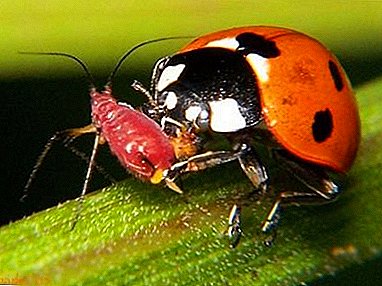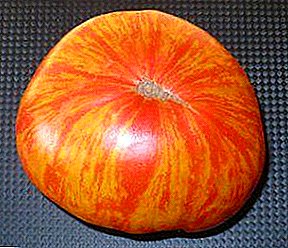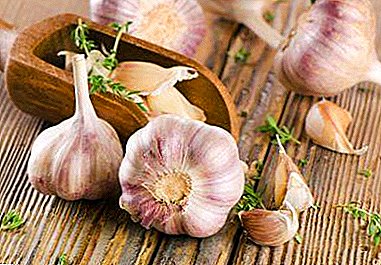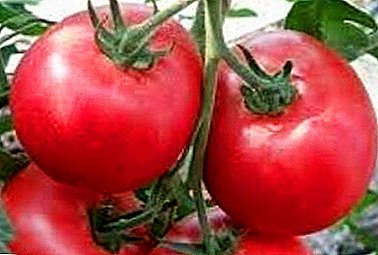 Fattening broilers for slaughter is a profitable and popular business, so most farmers are interested in the issue of quick weight gain of poultry. One of the good options to achieve the desired result is the use of feed, which consists of only the most nutritious components. You can purchase ready-made mixes, or you can cook everything yourself, which can be an even more profitable solution.
Fattening broilers for slaughter is a profitable and popular business, so most farmers are interested in the issue of quick weight gain of poultry. One of the good options to achieve the desired result is the use of feed, which consists of only the most nutritious components. You can purchase ready-made mixes, or you can cook everything yourself, which can be an even more profitable solution.
Advantages and disadvantages of feeding broiler feed
Some poultry farmers do not dare to transfer chickens completely to mixed fodder, arguing their point of view by the unnatural formulations. 
However, with the mass cultivation of broilers on an industrial scale, this solution will be more successful than feeding one grain.
There are several advantages of feed, and above all they include:
- getting birds a sufficient amount of lysine, protein and amino acids, which has a positive effect on their health;
- rapid growth and a good weight gain, even in the case of livestock feeding (the maximum figures are achieved in just 1-1.5 months of regular feeding with mixed feed).
It will also be helpful for you to learn more about how to properly feed broiler chickens, how and when to feed nettles to broilers. And also how to make a feeder for broilers and for adult broilers.
However, this practicality is not without certain disadvantages:
- the use of compound feed will require you a large cash outlay (such mixtures are more expensive than ordinary grain, even in combination with vitamin supplements);
- will have to constantly monitor the consumption of water by birds (they should drink 2 times more than eat);
- the possible presence of a large number of synthetic components, which is why you have to carefully choose the ready-made formulations (feed them with one “chemistry” in any case is not worth it).

If you feed chickens for your own consumption, it is very undesirable to completely transfer them to feed. In extreme cases, you can partially enter them into the diet of the bird, after making sure of the high quality of the mixture (preferably cooked with your own hands).
Important! Synthetic ingredients do not mix well with natural ingredients and almost always remain in trays in the form of white powder. Accordingly, the more of it, the more chemical compounds will get into the poultry meat.
Feeding rates depending on the age of broilers
Today there are several popular broiler feeding schemes, so each farmer can choose a specific option based on personal wishes.
In private breeding, fattening is most often carried out according to the simplest, 2-stage scheme:
- from the moment of the appearance of the broiler chicken and up to 1 month it is fed with starter mixtures (PC 5-4);
- starting from 1 month and until slaughter, the poultry farmer uses the so-called "finishing" feed (PK 6-7).

A little more complicated is the 3-stage fattening scheme, more characteristic of large poultry farms:
- up to 3 weeks of age, birds eat the starting feed mixture (PK 5-4);
- then 2 weeks they feed them with PC 6-6 feed;
- after 6 weeks of age and up to the time of slaughter, finishing nutritional rations with labeling of PC 6-7 are actively used.
Learn also how to properly feed the PC 5 and PC 6 feed for broilers.
The most complex, 4-stage scheme is used only in fully automated industrial plants:
- up to 5 days of age, young individuals are fed with PC 5-3 feed (the so-called “pre-start”);
- then the starter mixes (PC 5-4), which are used until the chicks are 18 days of age, fall asleep in the feeders;
- from the 19th to the 37th day, the birds are given special feeding mixtures (PK 6-6);
- and from the 38th day until the time of slaughter, the feeders are filled with finishing feed mixtures (PK 6-7).
Specific feeding rates will depend on the broiler cross, their age and live weight, so each breeder gives his own advice on feeding the birds. 
However, the averaged values look like this:
- if the chicken weighs up to 116 g, it needs to be given about 15-21 g of full-feed per day (this option is suitable from birth to 5 days old);
- up to 18 days of age, consumption rates are gradually increasing - up to 89 g per 1 bird;
- from 19 to 37 days of fattening, young broilers are given 93-115 g of feed formula per individual (it is at this age that the greatest weight gain of poultry can be noted: from 696 g to 2 kg).
Did you know? Broilers are called not only chickens. This is a general term for a number of farm animals that are characterized by accelerated growth and development. As for the chicken world, most often broiler chickens are obtained from parent breeds such as white cornish and white plymouthrock.
At the final stage of feeding for 1 chicken, 160-169 g of mixed feed is calculated, and this amount of the mixture is given up to the slaughter (this usually happens at the 42-day-old broiler age). The average weight of one bird at this point is 2.4 kg. 
The composition of feed for broilers
Any chicken meat requires high-calorie nutrition, but when you buy feed, you should immediately pay attention to their main ingredients. Mixes for broilers must include proteins, mineral and vitamin components, protein (present in grass meal), corn and fodder wheat.
All this is very necessary for a growing organism and should be made up in proportions characteristic of a particular period of bird life.
Such feed can be divided into 3 species, in each of which one or another component will be dominant. "Start" contains more protein and is represented by a melkofraktsionny composition so that the little chicken does not choke.
“Growth” mixtures contain all the components necessary for enhanced growth of muscle tissue (chicken), and “Finish” differs from the previous versions by a minimum of protein, but a large amount of vitamins and minerals. 
If grain is present in feed mixtures, its specific weight is usually 60-65%, taking into account the specific type of grain crops (corn, oats, barley, or wheat). Protein sources in this case can serve as fish meal, amino acids, crushed meal, beans and oilcake.
Mineral components are represented by salt, limestone and phosphates, and in some cases, in addition to this set, drugs are also used to prevent infectious bird diseases in the initial stages of broiler development.
Did you know? The first feed mill of state importance in the USSR began to operate in the Moscow region in 1928.
Recipe for mixed fodder at home
If you are worried about the naturalness of the finished feed and want to make the broiler food as natural as possible, then you should consider the independent preparation of a complete nutrient mixture. Of course, when performing a task you should always take into account the specific age of the bird. 
For broilers in the first days of life
The diet of small chickens from the first days of life should consist of the most useful and nutritious food.
Therefore, up to 2 weeks of age, it is advisable to feed babies with corn, cereals and even dairy products made up in such quantity:
- corn - 50%;
- wheat - 16%;
- cake or meal - 14%;
- nonfat kefir - 12%;
- barley - 8%.
Important! When self-creating feed, you should not ignore the specified percentage of all components, because only so the resulting mixture can be considered as balanced as possible.
In addition, this recipe is worth adding the necessary amount of vitamins and chalk, which can be purchased at a veterinary pharmacy. A day for one chicken should be at least 25 g of this nutrient composition. 
For broilers 2-4 weeks of life
Growing broiler chickens already require a large amount of nutritional components, since right now the period of their active growth and weight gain begins.
The recipe for "home" feed in this case involves the use of such components:
- corn - 48%;
- cake or meal - 19%;
- wheat - 13%;
- fish or meat and bone meal - 7%;
- fodder yeast - 5%;
- dry skimming - 3%;
- herbs - 3%;
- feed fat - 1%.
The resulting mixture is usually given in a dry form, but sometimes it is still worth using wet masters. To prepare this type of feed, it is enough to add water or fresh milk to the resulting feed. Sour milk is not suitable for these purposes, in extreme cases, it can be replaced with cottage cheese or yogurt. 
For broilers from 1 month of life
Many farmers send broilers for slaughter at the age of one month, but to increase their weight, it is advisable to feed the birds for some time.
During this period homemade feed can be used, prepared from:
- corn flour - 45%;
- sunflower meal or meal - 17%;
- bone meal - 17%;
- crushed wheat - 13%;
- grass flour and chalk - 1%;
- yeast - 5%;
- feed fat - 3%.
In fact, these are all the same ingredients that were used to prepare the mixtures at the previous stage of the bird’s life, only in this case they are distributed so that the chickens gain a large mass. 
As you can see, there is nothing difficult in the preparation of compound feed with your own hands, but it will take some time to create them.
Most poultry farmers (especially in large industrial enterprises) prefer not to spend time on it and buy ready-made feed, but you can argue about the quality of the finished product.
Unscrupulous chicken suppliers feed the chickens with unnatural food, which can negatively affect the health of consumers. Therefore, when breeding poultry for personal use, we recommend using self-made mixes.
Feedback from network users













